Table of Contents
- Preface
- 1 Introduction
- 1.1 Sensor Networks
- 1.2 Inertial Navigation
- 1.3 Situational Awareness
- 1.4 Statistical Approaches
- 1.5 Software Support
- 1.6 Outline of the Book
Part I Fusion in the Static Case
- 2 Linear Models
- 2.1 Introduction
- 2.2 Least Squares Approaches
- 2.3 Fusion
- 2.4 The Maximum Likelihood Approach
- 2.5 Cramér-Rao Lower Bound
- 2.6 Summary
- 3 Nonlinear models
- 3.1 Introduction
- 3.2 Nonlinear Least Squares
- 3.3 Linearizing the Measurement Equation
- 3.4 Inversion of the Measurement Equation
- 3.5 A General Approximation Strategy
- 3.6 Conditionally Linear Models
- 3.7 Implicit Measurement Equation
- 3.8 Summary
- 4 Sensor Networks
- 4.1 Typical Observation Models
- 4.2 Target Localization
- 4.3 NLS and SLS Solutions
- 4.4 Dedicated Least Squares Solutions
- 4.5 Extended Estimation Problems
- 4.6 Summary
- 5 Detection and Classification Problems
- 5.1 Detection
- 5.2 Classification
- 5.3 Association
- 5.4 Summary
Part II Fusion in the Dynamic Case
- 6 Filter Theory
- 6.1 Introduction
- 6.2 The Fusion-Diffusion Approach to Filtering
- 6.3 The Classical Approach to Nonlinear Filtering
- 6.4 Grid Based Methods
- 6.5 Nonlinear Filtering Bounds
- 6.6 Summary
- 7 The Kalman Filter
- 7.1 Kalman Filter Algorithms
- 7.2 Practical Issues
- 7.3 Computational Aspects
- 7.4 Smoothing
- 7.5 Square Root Implementation
- 7.6 Filter Monitoring
- 7.7 Examples
- 7.8 Summary
- 8. The Extended and Unscented Kalman Filters
- 8.1 DARE-based Extended Kalman Filter
- 8.2 Riccati-Free EKF and UKF
- 8.3 Target Tracking Examples
- 8.4 Summary
- 9 The Particle Filter
- 9.1 Introduction
- 9.2 Recapitulation of Nonlinear Filtering
- 9.3 The Particle Filter
- 9.4 Tuning
- 9.5 Choice of Proposal Distribution
- 9.6 Theoretical Performance
- 9.7 Complexity Bottlenecks
- 9.8 Marginalized Particle Filter Theory
- 9.9 Particle Filter Code Examples
- 9.10 Summary
- 10 Kalman Filter Banks
- 10.1 General Solution
- 10.2 On-Line Algorithms
- 10.3 Off-Line Algorithms
- 10.4 Summary
- 11 Simultaneous Localization and Mapping
- 11.1 Introduction
- 11.2 Kalman Filter Approach
- 11.3 The FastSLAM Algorithm
- 11.4 Marginalized FastSLAM
- 11.5 Summary
Part III Practice
- 12 Modeling
- 12.1 Discretizing Linear Models
- 12.2 Discretizing Nonlinear Models
- 12.3 Discretizing State Noise
- 12.4 Linearization Error and Choice of State Coordinates
- 12.5 Sensor Noise Modeling
- 12.6 Choice of Sampling Interval
- 12.7 Calibration of Dynamical Systems
- 12.8 Summary
- 13 Motion Models
- 13.1 Translational Kinematics
- 13.2 Rotational Kinematics
- 13.3 Rigid-Body Kinematics
- 13.4 Constrained Kinematic Models
- 13.5 Odometric Models
- 13.6 Vehicle Models
- 13.7 Aircraft Dynamics
- 13.8 Underwater Vehicle Dynamics
- 13.9 Summary
- 14 Sensors and Sensor Near Processing
- 14.1 Ranging Sensors
- 14.2 Physical Sensors
- 14.3 Wheel Speed Sensors
- 14.4 Wireless Network Measurements
- 14.5 Summary
- 15 Filter and Model Validation
- 15.1 Parametric Uncertainty
- 15.2 Ground Truth Data
- 15.3 Sensor Calibration Issues
- 15.4 Summary
- 16 Applications
- 16.1 Sensor Networks
- 16.2 Kalman Filtering
- 16.3 Particle Filter Positioning Applications
Appendices
- A Statistics Theory
- A.1 Selected Distributions
- A.2 Conjugate Priors
- A.3 Nonlinear Transformations
- B Sampling Theory
- B.1 Generating Samples from Uniform Distribution
- B.2 Accept-Reject Sampling
- B.3 Bootstrap
- B.4 Resampling
- B.5 Stochastic Integration by Importance Sampling
- B.6 Markov Chain Monte Carlo
- B.7 Gibbs Sampling
- C Estimation Theory
- C.1 Basic Concepts
- C.2 Cramér-Rao Lower Bound
- C.3 Sufficient Statistics
- C.4 Rao-Blackman-Lehmann-Scheffe's Theorem
- C.5 Maximum Likelihood Estimation
- C.6 The Method of Moments
- C.7 Bayesian Methods
- C.8 Recursive Bayesian Estimation
- D Detection Theory
- D.1 Notation
- D.2 The Likelihood Ratio Test
- D.3 Detection of Known Mean in Gaussian Noise
- D.4 Eliminating Unknown Parameters
- D.5 Nuisance Parameters
- D.6 Bayesian Extensions
- D.7 Linear Model
- E Least Squares Theory
- E.1 Derivation of Least Squares Algorithms
- E.2 Matrix Notation and QR Factorizations
- E.3 Comparing On-Line and Off-Line Expressions
- E.4 Asymptotic Expressions
- E.5 Derivation of Marginal Densities
- Index
